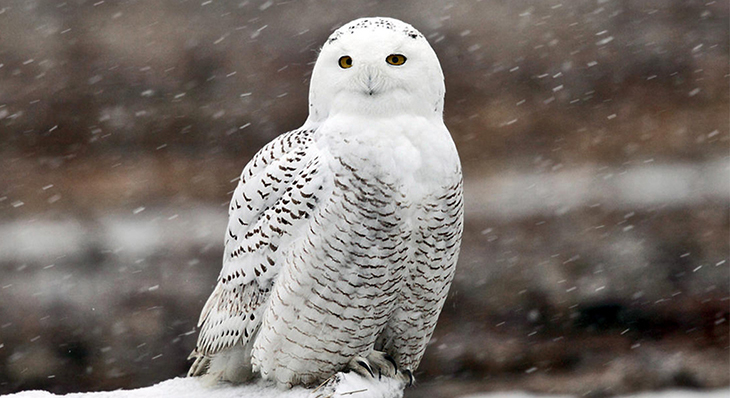

A Decades-Long Rescue Mission
For more than forty years, Norman Smith has been quietly carrying out one of North America’s most unique conservation efforts—relocating snowy owls from the runways of Boston Logan International Airport. What started in 1981 as a spur-of-the-moment rescue of a single bird has grown into a full-scale wildlife monitoring and rescue program that has safely relocated over 900 snowy owls to date. Smith, a raptor specialist with the Massachusetts Audubon Society, has become a fixture in Boston’s winter landscape, known as much for his deep knowledge of birds of prey as for his unwavering commitment to their protection.
“It’s been an incredible experience to learn about these birds and see what they do, where they go, and how long they might live,” Smith shared in a recent interview. “Together we can better understand, appreciate and care for the world in which we live.”
The Arctic in East Boston
It might seem counterintuitive that snowy owls, icons of the remote Arctic tundra, would find refuge in a busy urban airport. But Logan International Airport, situated on five islands that comprise East Boston, bears more resemblance to the owls’ native habitat than one might expect.
“It looks very much like the Arctic tundra,” Smith told CBS Boston. “It’s short, very short, mowed grass like it is in the Arctic. It’s surrounded on three sides by water, so there’s plenty of food on the airport.”
This combination of flat, open ground and proximity to the ocean creates ideal hunting conditions for the owls. Unfortunately, it also puts them in close proximity to jet engines, snowplows, and other hazards of modern aviation.
Risk in the Runway Zone
Snowy owls are powerful hunters, capable of taking down ducks, rodents, and even other birds of prey. But in the unfamiliar terrain of an airport, these apex predators are suddenly vulnerable. One mature female owl lost her wing feathers after landing on a snow-melting machine. Others have suffered electrocutions or collided with airport fences.
“The truth is, the airport is a dangerous place for them,” Smith explained. “But for the owls, it’s familiar terrain. They don’t realize the risks they’re stepping into.”
When Smith encounters an injured bird, he doesn’t hesitate to act. Working with the Blue Hills Trailside Museum in Milton, Massachusetts, he transports the animals for rehabilitation. If they recover, he relocates them to safer, more remote habitats across the state. Those unable to survive in the wild find a permanent home at the Mass Audubon property, where they are cared for and serve as ambassadors for wildlife education.
Tracking the Migration
Smith’s work goes beyond just rescue. Over the years, he has placed leg bands and GPS transmitters on many of the relocated owls, helping researchers understand more about the species’ migration patterns, breeding habits, and survival rates. Some of the owls he released in the early 1980s were later recorded in locations as far away as northern Canada and Greenland.
Each rescue, each tag, and each release provides another data point in the story of a species that still holds many mysteries. Through careful observation and collaboration with ornithologists nationwide, Smith has helped transform Logan Airport from a zone of risk into a site of scientific value.
A Story Worth Sharing
Smith’s remarkable work caught the attention of filmmaker Anna Miller, who captured the story in her documentary The Snowy Owls of Logan Airport. The film recently earned the Audience Choice Award at the American Conservation Film Festival, drawing attention to an unexpected place where conservation and aviation intersect.
The documentary explores not only the biological and ecological aspects of Smith’s work but also the emotional connection he has formed with the birds over the years. Viewers watch as he gently captures, examines, and releases the owls—actions that reflect decades of experience and a lifetime of compassion.
A Legacy in Flight
At a time when bird populations are under increasing threat from climate change, habitat loss, and urbanization, Smith’s work offers a rare glimmer of hope. His efforts demonstrate how human infrastructure and wildlife preservation don’t have to be in conflict—and that even a place as unlikely as an international airport can become a sanctuary.
“Norman has shown us what it means to coexist with nature, even in the most unexpected places,” said Miller in an interview following the film’s release. “This story is as much about owls as it is about the possibility of care, patience, and stewardship.”
Through decades of quiet commitment, Norman Smith has safeguarded hundreds of snowy owls and educated thousands of people. As his story gains wider recognition, it also reminds us that the survival of species sometimes depends not on sweeping legislation or massive budgets, but on the dedication of a single individual who chooses to act.
What are your thoughts? Please comment below and share this news!
True Activist / Report a typo







